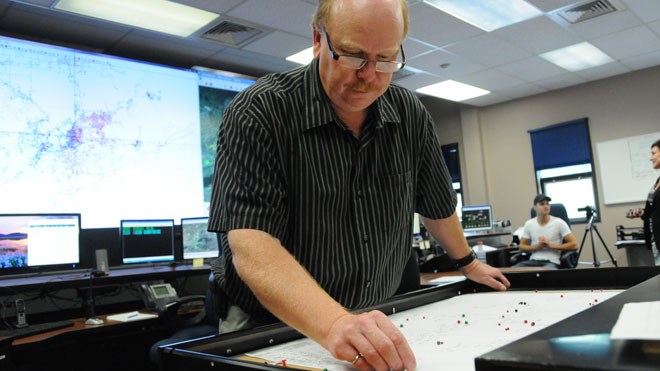Michelle Robichaud was reading a book on the balcony of her Sudbury apartment when the lights went out at 4:10 p.m. Aug. 14, 2003.
But the lights weren't just out in her neighbourhood – it was a blackout that affected an estimated 55 million people in Ontario and parts of the Northeastern and Midwestern United States.
At the time, it was the second most widespread blackout in history.
“All of a sudden it became extremely quiet,” said Robichaud, one of several people Northern Life approached in Bell Park recently to talk about their memories of the blackout as the 10-year anniversary of the event approaches.
“That's the first thing that hit me about it - the silence. It's unbelievable how much noise comes from the electric wires and everything.”
Robichaud dug out an old battery-operated radio, and that's when she learned how large the blackout was. Neighbours started gathering in her apartment to listen to news reports.
She said she liked the sense of community the blackout created in her building. “You could feel the people banding together,” Robichaud said. “People were asking 'Are you OK? Do you need water? You want me to check up on you?'”
On a lighter note, Robichaud remembers how her husband, Jean, learned from a news report that the Tim Hortons in Garson was still operating, despite the blackout. He lined up with countless other Sudburians at the restaurant.
Brian McMillan, now the vice-president of distribution electrical systems at Greater Sudbury Hydro, said he was talking to another employee in his office when the power went out.
McMillan went down to the utility's control room, and by then, his colleagues had learned the power was out across the northeastern part of North America, including major cities such as Toronto, New York City and Cincinnati.
Darkness aside, the city fared well. Backup power kept Sudbury's three hospital sites operational. Police reported no motor vehicle accidents or criminal incidents during the event. The blackout trapped 170 Falconbridge miners underground for several hours.
While authorities were kept busy as they made sure everyone was safe, Nadine Kosiw of Coniston said she actually has fond memories of the blackout.
She said her daughter and her grandchildren were visiting at the time, and they enjoyed spending time outside together that evening.
“We had flashlights in the house,” she said. “It was OK.”
Diane McGragh said her two sons, then five and seven years old, were playing video games when the screen went blank.
Once they realized the power wasn't going to be coming back for awhile, she said the family set up a generator and learned a lesson in emergency preparedness.
Although there wasn't a single cause of the outage, as is so often the case, there was a tree involved. Instead, the intermingled nature of the power generation and transmission systems in Ontario and the northeastern United States contributed to the power loss, McMillan said.
The event that caused a “cascade” of power losses was a tree hitting a power line in Ohio, he said.
“It was a series of events in the days leading up to the actual blackout that were set like dominoes on a table,” he said. “If you had been able to remove any one of those dominoes, it wouldn't have happened.”
But even though power was restored to the city, the province's electricity system had taken a beating, prompting authorities to ask industry and individuals alike to conserve power.
While everyone co-operated in the beginning, that attitude didn't last long.
“Conservation fatigue was setting in as we went through this day after day,” McMillan said.
“You could see that fewer and fewer industries and fewer and fewer personal residences were willing and able to keep going with the conservation effort.”
After the blackout, a United-States-Canada task force was set up to examine the event, and made several recommendations. Power corporations were forced to implement certain measures to ensure power reliability.
So could anything like this ever happen again?
“I certainly think it's not probable, but it is possible,” McMillan said. “The electric system is a huge, geographically-dispersed machine, and any machine can break.”
